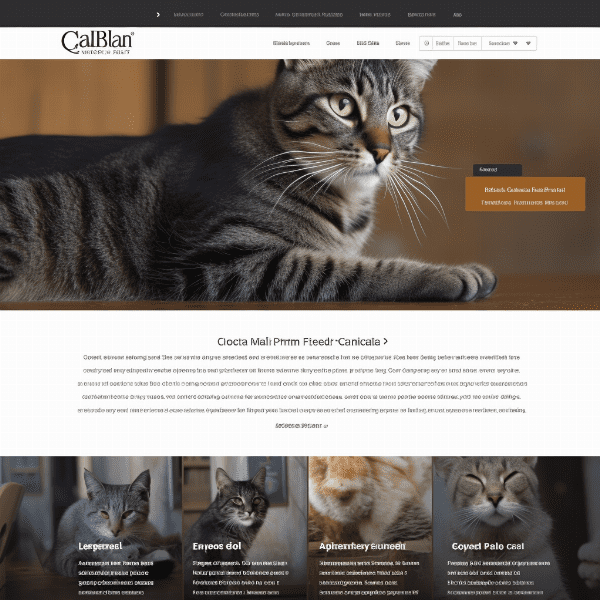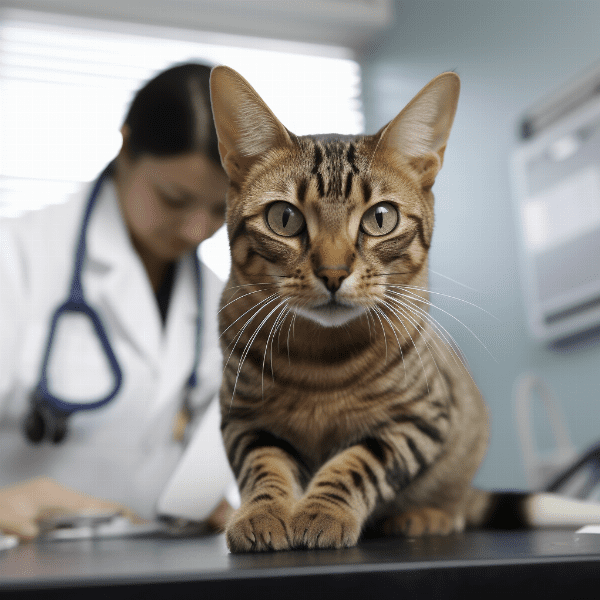Table of Contents
- What is Cerebellar Abiotrophy in Cats?
- Causes and Symptoms of Cerebellar Abiotrophy
- Diagnosis and Testing for Cerebellar Abiotrophy in Cats
- Treatment and Management of Cerebellar Abiotrophy in Cats
- Prognosis and Life Expectancy for Cats with Cerebellar Abiotrophy
- Caring for a Cat with Cerebellar Abiotrophy: Tips and Considerations
- Genetic Counseling and Breeding Practices for Cerebellar Abiotrophy in Cats
- Research and Advances in the Study of Cerebellar Abiotrophy in Cats
- Personal Stories and Experiences with Cerebellar Abiotrophy in Cats
- Resources and Support for Cat Owners Dealing with Cerebellar Abiotrophy.
What is Cerebellar Abiotrophy in Cats?
Cerebellar Abiotrophy (CA) is a neurodegenerative disorder that affects the cerebellum of cats. The cerebellum is the part of the brain that controls movement and coordination. When a cat has CA, the cells in their cerebellum begin to die, leading to a progressive loss of coordination, balance, and motor skills.
How Does Cerebellar Abiotrophy Develop in Cats?
Cerebellar Abiotrophy in cats is typically genetic, meaning it’s inherited from one or both parents. The disease can manifest in cats of any breed or age, but it is most commonly seen in certain breeds, such as the Siamese, Abyssinian, and Burmese.
What are the Symptoms of Cerebellar Abiotrophy in Cats?
Symptoms of cerebellar abiotrophy in cats can vary, depending on the severity and progression of the disease. Some common symptoms may include tremors, head bobbing, unsteady gait, and an inability to jump or climb. As the disease progresses, cats may have difficulty eating, drinking, and grooming themselves.
How is Cerebellar Abiotrophy Diagnosed in Cats?
Diagnosing cerebellar abiotrophy in cats involves a combination of physical exams, neurological assessments, and diagnostic tests. Your veterinarian may perform blood work, imaging tests, and genetic testing to rule out other causes of neurological disorders and to confirm a diagnosis of CA.
Is There a Cure for Cerebellar Abiotrophy in Cats?
Unfortunately, there is no cure for cerebellar abiotrophy in cats. However, early diagnosis and treatment can help slow the progression of the disease and improve your cat’s quality of life. Management options may include medications to control symptoms, physical therapy, and environmental modifications to make it easier for your cat to move around and perform daily activities.
In summary, Cerebellar Abiotrophy in cats is a progressive and debilitating neurological disorder that affects coordination and motor skills. While there is no cure, early diagnosis and treatment can help improve your cat’s quality of life. If you suspect your cat may have CA, it’s important to seek veterinary care as soon as possible.
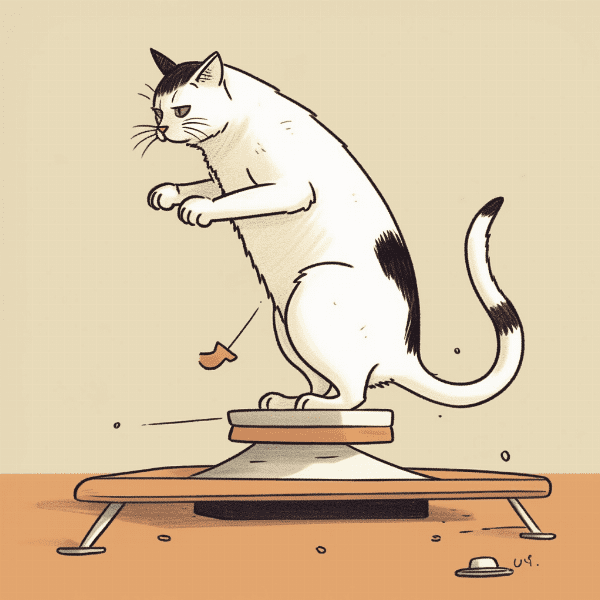
Causes and Symptoms of Cerebellar Abiotrophy
Cerebellar Abiotrophy in cats is caused by the progressive degeneration of the Purkinje cells in the cerebellum. While the exact cause of this degeneration is not fully understood, research suggests that it is primarily a genetic disorder, with certain breeds being more predisposed to the condition than others. Some cats may inherit the disease from one or both parents, while others may develop it spontaneously.
Genetic Factors in Cerebellar Abiotrophy
Cerebellar Abiotrophy is an autosomal recessive trait, which means that a cat must inherit two copies of the abnormal gene (one from each parent) to develop the condition. Cats that inherit only one copy of the gene are carriers and do not develop the disease, but they can pass the gene on to their offspring. Breeds that are predisposed to cerebellar abiotrophy, such as the Siamese, may have a higher frequency of carriers in their gene pool.
Symptoms of Cerebellar Abiotrophy
Symptoms of cerebellar abiotrophy in cats usually start to appear between 6 and 12 months of age, but they can also develop later in life. The symptoms may be mild at first, but they gradually worsen over time as more Purkinje cells in the cerebellum degenerate.
Common symptoms of cerebellar abiotrophy in cats include a wobbly or unsteady gait, head tremors, difficulty jumping or climbing, and loss of coordination. Some cats may also have a wide-based stance and walk with their legs spread apart. As the disease progresses, cats may have difficulty eating, drinking, and grooming themselves.
In summary, cerebellar abiotrophy in cats is primarily caused by genetic factors, with certain breeds being more predisposed to the condition. Symptoms typically start to appear between 6 and 12 months of age and include a wobbly gait, head tremors, and loss of coordination. It’s important to seek veterinary care if you suspect your cat may have cerebellar abiotrophy, as early diagnosis and treatment can help improve their quality of life.
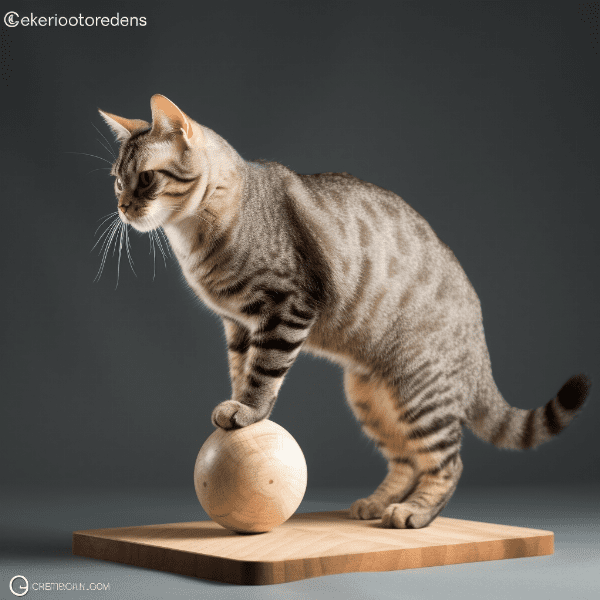
Diagnosis and Testing for Cerebellar Abiotrophy in Cats
Diagnosing cerebellar abiotrophy in cats can be challenging, as the symptoms can be similar to those of other neurological disorders. However, early diagnosis is important to help manage the disease and improve your cat’s quality of life.
Physical Examination and Neurological Assessment
During a physical examination, your veterinarian will look for any signs of tremors, unsteadiness, and loss of coordination in your cat. They may also perform a neurological assessment to evaluate your cat’s reflexes, muscle tone, and overall neurological function.
Diagnostic Tests
To help confirm a diagnosis of cerebellar abiotrophy in cats, your veterinarian may recommend several diagnostic tests, such as blood work, urine analysis, and imaging tests. These tests can help rule out other causes of neurological disorders, such as infections, metabolic disorders, and tumors.
Differential Diagnosis
It’s important to note that cerebellar abiotrophy in cats can be easily misdiagnosed as other neurological disorders, such as feline dysautonomia or cerebellar hypoplasia. Therefore, a thorough differential diagnosis is essential to ensure that your cat receives the appropriate treatment and management.
In summary, diagnosing cerebellar abiotrophy in cats requires a combination of physical examination, neurological assessment, and diagnostic tests. Genetic testing can also be used to confirm a diagnosis and identify carriers of the abnormal gene. A thorough differential diagnosis is essential to rule out other causes of neurological disorders and ensure appropriate treatment and management.
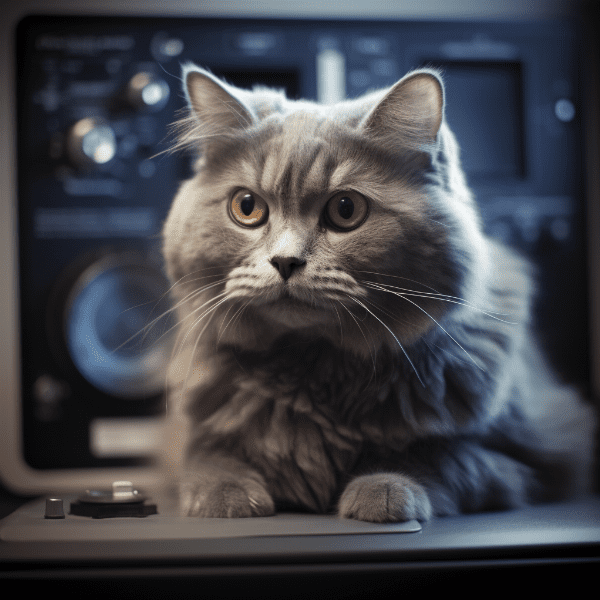
Treatment and Management of Cerebellar Abiotrophy in Cats
While there is no cure for cerebellar abiotrophy in cats, there are several management options that can help improve your cat’s quality of life and slow the progression of the disease.
Medications
Medications can be used to help manage the symptoms of cerebellar abiotrophy in cats. These may include anti-anxiety medications to help reduce tremors and muscle relaxants to ease stiffness and spasms. However, it’s important to note that not all cats respond well to medication, and some may experience side effects.
Physical Therapy
Physical therapy can also be helpful for cats with cerebellar abiotrophy. This may include exercises to improve balance, coordination, and muscle strength. Your veterinarian may recommend working with a veterinary physical therapist or providing your cat with specialized equipment, such as a harness or wheelchair, to help them move around more easily.
Environmental Modifications
Making environmental modifications can also help improve your cat’s quality of life. This may include providing your cat with litter boxes with low sides, placing food and water bowls at a comfortable height, and using carpeting or mats to help provide traction on slippery floors.
Nutritional Support
Some cats with cerebellar abiotrophy may benefit from nutritional support, such as a high-calorie diet or supplements to support joint health. Your veterinarian can recommend an appropriate diet and supplements for your cat’s specific needs.
End of Life Care
In summary, while there is no cure for cerebellar abiotrophy in cats, there are several management options that can help improve your cat’s quality of life and slow the progression of the disease. These may include medications, physical therapy, environmental modifications, nutritional support, and end-of-life care. It’s important to work closely with your veterinarian to develop a treatment plan that is tailored to your cat’s individual needs.

Prognosis and Life Expectancy for Cats with Cerebellar Abiotrophy
The prognosis for cats with cerebellar abiotrophy can vary depending on the severity of the disease and the age at which symptoms first appear. While the disease is progressive and there is no cure, early diagnosis and treatment can help slow the progression of the disease and improve your cat’s quality of life.
Progression of the Disease
Cerebellar abiotrophy in cats is a degenerative disease, which means that it will continue to progress over time. As more Purkinje cells in the cerebellum degenerate, your cat’s coordination, balance, and motor skills will continue to decline. However, the rate of progression can vary, and some cats may experience a slower decline than others.
Life Expectancy
The life expectancy for cats with cerebellar abiotrophy can also vary depending on the severity of the disease and the level of care and management they receive. While some cats may only live a few months after diagnosis, others can live for several years with appropriate treatment and management.
Quality of Life
The most important factor in managing cerebellar abiotrophy in cats is to ensure that they have a good quality of life. This may involve making environmental modifications to help them move around more easily, providing physical therapy to improve their coordination and muscle strength, and giving them a high-quality diet and supplements to support their overall health.
End-of-Life Care
In some cases, euthanasia may be the most humane option for cats with cerebellar abiotrophy, particularly if their quality of life has deteriorated to the point where they are no longer able to enjoy normal activities or are experiencing significant discomfort or pain. Your veterinarian can provide guidance on when this may be the best option and can help ensure that your cat is comfortable and pain-free during their final days.
In summary, the prognosis and life expectancy for cats with cerebellar abiotrophy can vary depending on the severity of the disease and the level of care and management they receive. While there is no cure for the disease, early diagnosis and treatment can help slow its progression and improve your cat’s quality of life. It’s important to work closely with your veterinarian to ensure that your cat receives the best possible care and management.
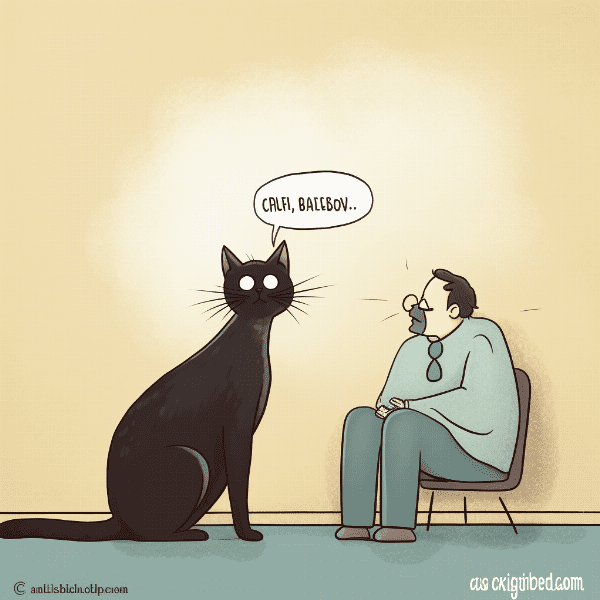
Caring for a Cat with Cerebellar Abiotrophy: Tips and Considerations
Environment
One of the most important considerations when caring for a cat with cerebellar abiotrophy is their environment. You’ll want to make sure that your home is safe and comfortable for your cat to move around in, with plenty of soft surfaces for them to land on in case of falls. You may also need to make modifications to your home to make it easier for your cat to navigate, such as adding ramps or steps to help them get up and down from high surfaces.
Diet
Providing your cat with a high-quality diet is also important when caring for a cat with cerebellar abiotrophy. You may need to provide your cat with smaller, more frequent meals to prevent them from becoming too tired while eating. Additionally, you may need to feed your cat from elevated bowls to make it easier for them to eat and drink.
Exercise and Play
While cats with cerebellar abiotrophy may not be as active as other cats, it’s still important to provide them with opportunities for exercise and play. This can include gentle exercises to improve their muscle strength and balance, as well as interactive toys that encourage them to move and play.
Medical Care
Regular veterinary check-ups are important when caring for a cat with cerebellar abiotrophy, as your veterinarian can monitor your cat’s condition and make adjustments to their treatment plan as necessary. You’ll also want to keep up with any medications or supplements prescribed by your veterinarian to help manage your cat’s symptoms.
Emotional Support
Cats with cerebellar abiotrophy may require additional emotional support, particularly if they are struggling with anxiety or fear related to their condition. Providing them with a calm and loving environment, and offering plenty of affection and attention, can help reduce their stress and improve their overall well-being.
In summary, caring for a cat with cerebellar abiotrophy requires careful consideration of their environment, diet, exercise, medical care, and emotional well-being. With the right approach and management, you can help improve your cat’s quality of life and ensure they remain comfortable and happy.
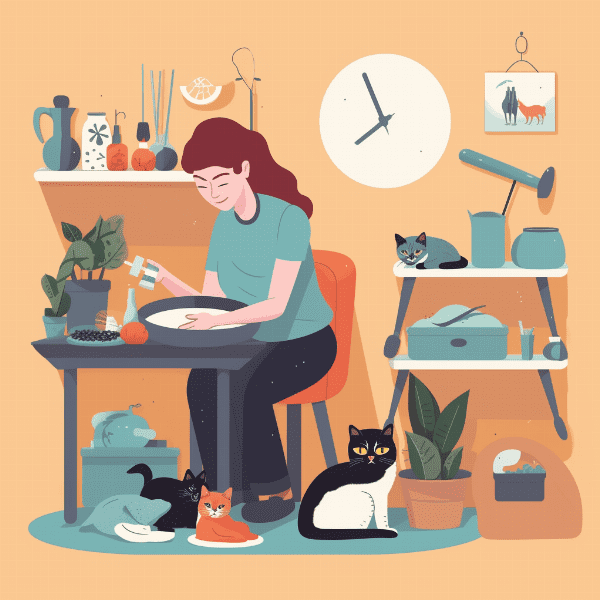
Genetic Counseling and Breeding Practices for Cerebellar Abiotrophy in Cats
Because cerebellar abiotrophy in cats is primarily a genetic disorder, it’s important for breeders to take steps to reduce the incidence of the disease in their breeding programs. Genetic counseling and responsible breeding practices can help ensure that cats are not unnecessarily subjected to the suffering caused by this disease.
Genetic Testing
One of the most important steps that breeders can take to reduce the incidence of cerebellar abiotrophy in cats is to perform genetic testing on their breeding cats. This can help identify carriers of the disease, allowing breeders to make informed decisions about which cats to breed and which to spay or neuter.
Breeding Strategies
Breeding strategies can also play a role in reducing the incidence of cerebellar abiotrophy in cats. One approach is to only breed cats that have tested negative for the disease, as well as their parents and siblings. This can help reduce the frequency of the abnormal gene in the breeding population.
Another approach is to use outcrossing, which involves breeding cats from unrelated breeds to introduce new genetic material and reduce the frequency of the abnormal gene. However, it’s important to note that outcrossing can also introduce new health problems, so it should only be done under the guidance of a veterinarian or genetic counselor.
Spaying and Neutering
Spaying and neutering can also help reduce the incidence of cerebellar abiotrophy in cats. This can prevent affected cats from passing the abnormal gene on to their offspring, as well as prevent carriers from passing the gene on to future generations.
Conclusion
In conclusion, genetic counseling and responsible breeding practices can play an important role in reducing the incidence of cerebellar abiotrophy in cats. This can help ensure that cats are not unnecessarily subjected to the suffering caused by this disease. Breeders can perform genetic testing, use responsible breeding strategies, and spay or neuter their cats to help reduce the frequency of the abnormal gene in the breeding population. Veterinary professionals can also play a role in educating breeders and pet owners about the importance of responsible breeding practices and genetic testing.
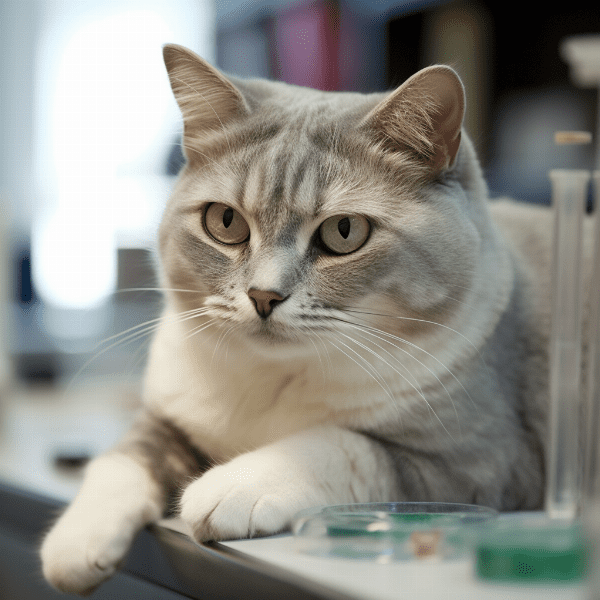
Research and Advances in the Study of Cerebellar Abiotrophy in Cats
Cerebellar abiotrophy in cats is a complex and devastating disease, and much research is currently being done to better understand the underlying causes and potential treatments.
Genetic Research
One area of research in cerebellar abiotrophy in cats is focused on the genetics of the disease. Researchers are working to identify the specific genetic mutations that lead to the disease and better understand how these mutations affect the development and function of the cerebellum.
Treatment Research
Another area of research is focused on potential treatments for cerebellar abiotrophy in cats. Researchers are exploring new medications and therapies that may be able to slow or even halt the progression of the disease, as well as improve the quality of life for affected cats.
Clinical Trials
Clinical trials are also being conducted to test new treatments and therapies for cerebellar abiotrophy in cats. These trials involve working with cats that have been diagnosed with the disease to evaluate the safety and effectiveness of new treatments.
Advancements in Technology
Advancements in technology are also helping to advance the study of cerebellar abiotrophy in cats. New imaging techniques, such as magnetic resonance imaging (MRI), are allowing researchers to better visualize the cerebellum and identify structural abnormalities that may be associated with the disease.
Conclusion
In conclusion, much research is currently being done to better understand cerebellar abiotrophy in cats and develop new treatments and therapies for the disease. Researchers are focused on understanding the genetics of the disease, developing new treatments, and conducting clinical trials to test new therapies. Advancements in technology are also helping to advance the study of the disease. With continued research and collaboration between veterinarians, researchers, and breeders, we can hope to improve the lives of cats affected by cerebellar abiotrophy.
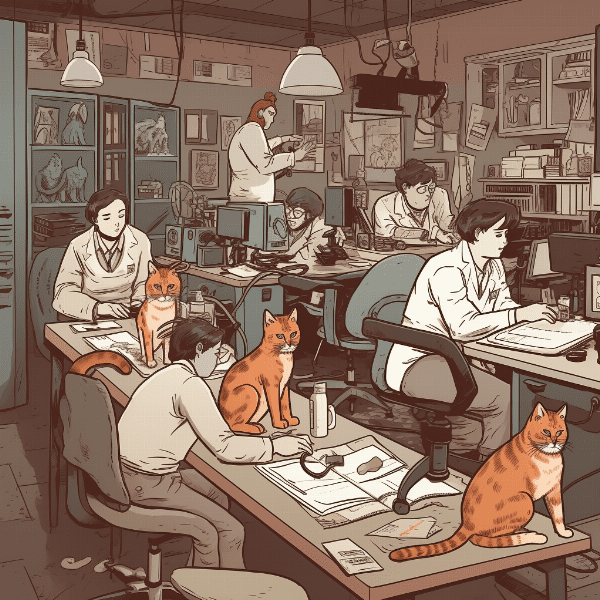
Personal Stories and Experiences with Cerebellar Abiotrophy in Cats
Cerebellar abiotrophy in cats can have a profound impact on the lives of affected cats and their families. Here are some personal stories and experiences from cat owners who have cared for cats with cerebellar abiotrophy.
Frustration and Challenges
Many cat owners report feeling frustrated and overwhelmed when caring for a cat with cerebellar abiotrophy. The disease can cause a range of challenges, including difficulty with eating, drinking, using the litter box, and navigating the home. Some cats may also experience anxiety or fear related to their condition.
Love and Dedication
Despite the challenges, many cat owners express a deep love and dedication to their cats with cerebellar abiotrophy. They work tirelessly to provide their cats with the best possible care, including modifying their home environment, providing physical therapy, and administering medications and supplements.
Joy and Happiness
Cat owners also report experiencing joy and happiness when caring for a cat with cerebellar abiotrophy. Many cats with the disease are able to live happy and fulfilling lives, even with their limitations. Owners often report that their cats are loving, affectionate, and grateful for the care that they receive.
Advocacy and Awareness
Some cat owners have also become advocates for cats with cerebellar abiotrophy, raising awareness about the disease and working to support research and treatment efforts. They share their personal stories and experiences to help educate others about the disease and promote responsible breeding practices.
Conclusion
In conclusion, caring for a cat with cerebellar abiotrophy can be both challenging and rewarding. Cat owners often experience frustration and challenges, but also love, dedication, joy, and happiness. By sharing their personal stories and experiences, cat owners can help raise awareness about the disease and promote research and treatment efforts.

Resources and Support for Cat Owners Dealing with Cerebellar Abiotrophy.
Caring for a cat with cerebellar abiotrophy can be a challenging and isolating experience, but there are resources and support available to help cat owners cope with the disease.
Veterinary Professionals
One of the most important sources of support for cat owners dealing with cerebellar abiotrophy is their veterinary professionals. Veterinarians can provide guidance on managing the disease, as well as offer emotional support and advice on making modifications to the home environment.
Support Groups
There are also several online support groups and forums dedicated to cats with cerebellar abiotrophy. These groups provide a place for cat owners to connect with others who are dealing with similar challenges, share advice and tips, and offer emotional support.
Educational Resources
Educational resources are also available for cat owners who want to learn more about cerebellar abiotrophy in cats. These resources may include articles, videos, and webinars on topics such as diagnosis, treatment, and management of the disease.
Breed-Specific Organizations
Breed-specific organizations can also be a valuable resource for cat owners dealing with cerebellar abiotrophy. These organizations may offer educational resources, support groups, and advocacy efforts focused on reducing the incidence of the disease in specific breeds.
Conclusion
In conclusion, there are many resources and sources of support available to cat owners dealing with cerebellar abiotrophy. Veterinary professionals, support groups, educational resources, and breed-specific organizations can all offer guidance, advice, and emotional support to cat owners who are coping with the challenges of caring for a cat with this disease. By accessing these resources, cat owners can help ensure that their cat receives the best possible care and improve their own well-being and quality of life.
